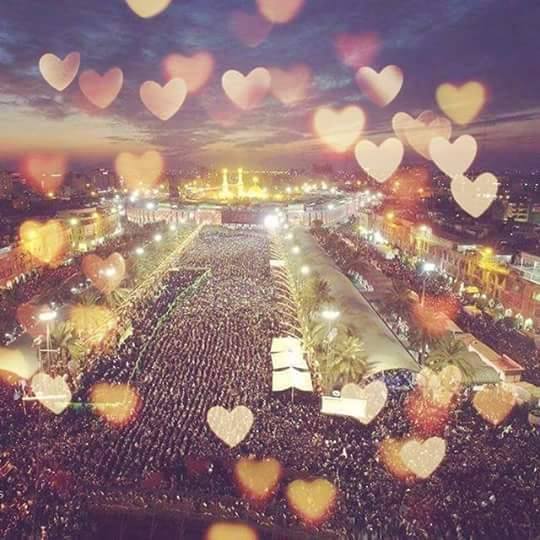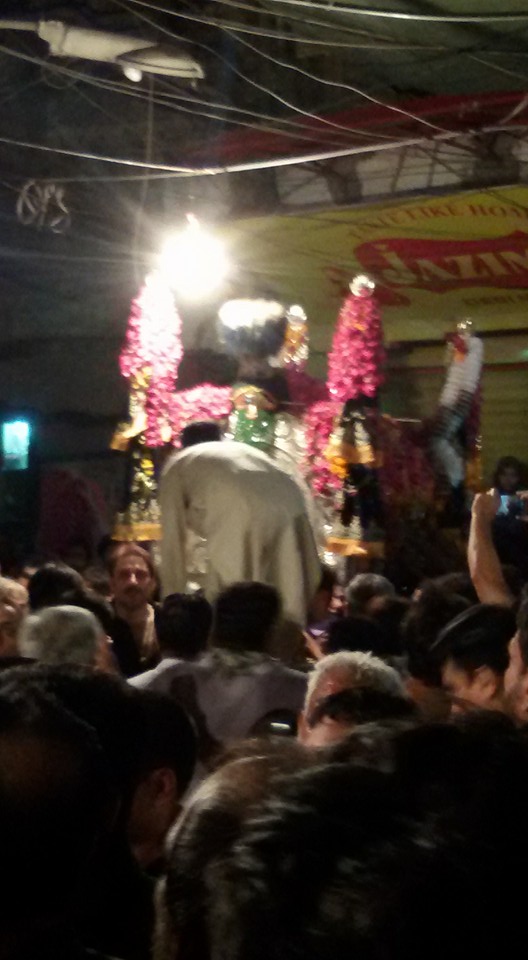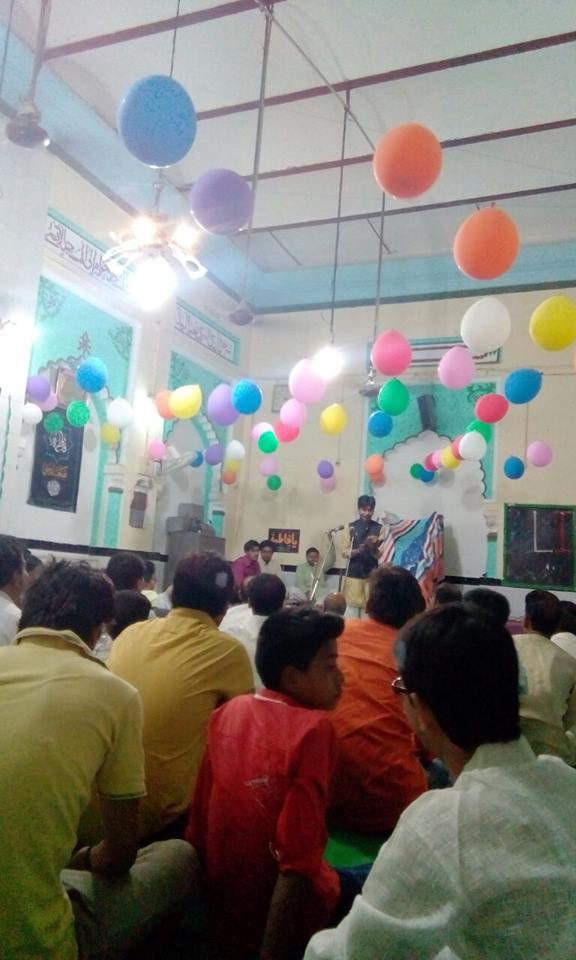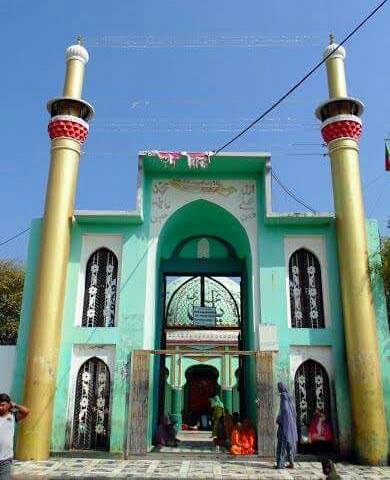This is the second research note by Epsita Halder, one of the researchers who received the Social Media Research grant for 2016.
I was watching a video post on the Facebook wall of ‘Calcutta Azadari’ where religious practitioners were beating their chests to mourn the martyrdom of Imam Husayn and uttering his name in rhythm. A religious performance captured on camera doesn’t make us wonder anymore, thanks to television and the proliferation of channels. But in this video, the position of the camera person was curious. It is undeniably difficult to capture on camera the intense frenzy of mourning, but here, the video, shot by a member of the group with a handheld camera, gave the footage a compelling authenticity raising, at the same time, the question of how far a non-ritualistic act could be accommodated within. The recorder exempted himself from the acute physical performance of frenzied movements that is seen as the only way to grieve for the unjust killing of the Prophet’s grandson Imam Husayn in the battle of Karbala. Here, the community of performers in this ritual grief exempted one member, letting him film by standing at the core ritual space and doing a non-ritual act. He was also a part of the group, and his role of recording the performative grief and disseminate it on new media to rearticulate the community on the new platform made his act a part of this ritual mourning too.
When we talk about the Shia ritual space of mourning and its reconfiguration in new media, this discrepancy between devotional affect and the technologizing efforts of documenting it for circulation among the networked community is the most acute. The cassette culture of sermons, explored by Charles Hirshkind in Egypt[1], and other theoreticians working on the interface between new media and Islam[2], do not expose the discrepancy between religious emotion and status accorded to technology. As the Shia commemorative rituals entail a frenzied form of expressing grief, inclusion of the recording machine is both easy (as it has always been a performing community) and tough (affect gets mediated). What comes out is the gradually eroding gap between the centre of knowledge production and receivers. New media, in the process of becoming the most viable medium to carry and embody the Shia sensorium, brings others – the recorder, the editor, the Facebook account admin, members who are tagged, other Facebook account holders who comment or share – beyond the scope of traditional forms of knowledge and knowledge distribution. With the advent of new media and social networking sites as the condition and zone of community formation, religious knowledge becomes more participatory with different forms of ownership over the knowledge produced. Such ownerships — the posts, profile and cover pictures of ‘Calcutta Azadari’ embossed with the name of the account — open up possibilities of different agencies and multiple interpretations of the Karbala sentiment. Getting shared by other different Facebook accounts like ‘The Message of Karbala’, ‘West Bengal Shia Welfare Society’ and ‘AhlulBayt Islamic Mission’ builds an imagined community in the virtual space. Such imagined communities produce a different sense of national and transnational through their use of images produced from various locations, owned and re-owned, producing new layers of ownership through constant tagging and sharing.
‘Calcutta Azadari’ (3,590 likes on 3 May, 2016) shared this post of Atif Ali Khan who already tagged Muhammad Zaki on 2 May, 2016. This is a series of photographs taken during the procession at Mochi Gate, Lahore and the album is entitled as ‘Jaloose e Imam Musa e Kazim’.
This one, the next post on 3 May, is more explanatory and the followers of the page, if not already initiated in the intricate history of Shia imamate or if they just want to revise or reiterate (reiteration being community formation), get to know from the post that it was the commemoration of the martyrdom of Musa ibn Ja’far Al-Kadhim, who was poisoned by Harun Al-Rashid, the Baghdad caliph. We can see the simultaneous presence of the Islamic Hijri timeline on the textual matter posted on a Gregorian Anno Domini calendar making a palimpsest of the consciousness of time for the community. It is interesting to note that the creators and the primary owners of the ‘sacred’ images never miss to mention the spatial location of the sacred event that they capture which fixes the location, as it were, of community and individual ownership. Such inclinations and practices both root and extend the arc of the virtual imagined community. On 26 April, 2016, ‘Calcutta Azadari’ posted a recital at Bibi Anaro Imambara, Kolkata, organized by Anjuman Alamdar e-Husaini (Azamgunj), on 1 May shared ‘shias.in’s post (original post on 23 April) Jashan-e Maulus Kaaba Imam Ali, the celebration of the birthday of Imam Ali with date (13 Rajab 1437/2016), name of the photographer (John) and the place of celebration (Gaya).
Around the time of Imam Ali’s birthday, ‘Calcutta Azadari’, on 1 May, 2016, posted a series of photographs of the rowza of Imam Ali (originally posted by ‘The Message of Karbala’ on 26 April) fetching a comment of Shahzada Naqvi on 1 May – “Aree wah mashallah kitna pyara lg rha h mola ka roza”. The original post of ‘The Message of Karbala’ was a mobile upload with the specification of the name and location of this rowza – Najaf-e-Hind of Jogipura, Najiabad, Uttar Pradesh.
‘The Message of Karbala’ shared a post where the commemoration of the 37th Anniversary of the “Islamic Revolution of Iran” on 12 February 2016, creating a pan-Shia sensibility in the virtual space.
These posts, original and shared, give rise to a community of knowledge producers and consumers but with the inherent impossibility of maintaining any binary between them. Such communities, though placed within the autonomy of media surveillance, work beyond the direct capacity of state intervention. A new Shia public emerges in the intersection of religion, political and social configurations of mainstream society. It reformulates the notion of religious authority and keeps getting generated and proliferated via the paraphernalia of other forms of new media. Even if we say a channel of communication like Facebook is restricted among the privileged Internet users among Shias in urban or semi-urban areas, we need to remember the Internet has become easier on the pocket through cheap Internet packs and smartphones, and the smartphone, as a recording device and Bluetooth as the archive, is another viable option. As the techscape changes rapidly, bringing new users and new economies in its fold, new media becomes no less than a tool to reformulate religiosity. New media touches what print media could not. It reaches religious material to the sub-literate or even illiterate masses and makes possible the interface between the sacred and an everyday life.
Notes:
[1] Charles Hirshkind, The Ethical Soundscape: Cassette Sermons and Islamic Counterpublics (Columbia University Press, 2006).
[2] Jon W. Anderson, ‘New Media, New Publics: Reconfiguring the Public Sphere of Islam’, Social Research, Vol. 70, No. 3, Islam: The Public and Private Spheres (fall 2003), pp.887-906; Dorothea E. Shultz, ‘Promises of Immediate Salvation: Islam, Broadcast Media and the Remaking of Religious Experience in Mali’, American Ethnologist, Vol. 33, No. 2 (May 2006), pp. 210-229; Abdi O. Shuriye, Bello K. Adeyemi and Shittu Huud, ‘Impact on New Media Technology on Islam-Western Relation’, Journal of Asian Scientific Research, 2013, 3(12): 1210-1219; Their work, as specifically based on the Sunni religiosity, does not need to engage with the sheer potential of a different sensorium that only the Shia mourning rituals invoke. So, when I talk about the interface between new media and the Shia religiosity, technology should be read as the carrier of the Shia sensorium, rather than as a hindrance to devotionalism.





